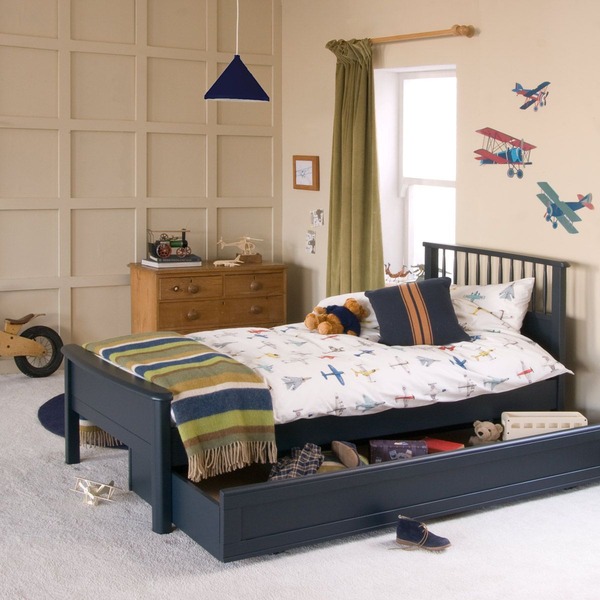A guide for parents from Little Folks
One of the most common questions we hear from parents is: When should my child move from a cot or toddler bed to a single bed, and do we really need a toddler bed stage at all?
The short answer: Not always.
Most families choose to move their toddler from a cot to a toddler bed around age two, but we believe that a well-crafted single bed is often a better long-term choice, especially when it’s low in height, built from solid hardwoods, and designed to support both children and adults. By investing in better quality beds, you are not only protecting the planet, but are also likely to save money in the long run.

From Cot to Bed: What to Consider
- Age & Sleep Habits: Around age two is typical, but readiness depends on your child’s size, confidence, and sleep patterns. If your little one is climbing out of their cot or asking for more independence, it may be time.
- Bed Height: A low-profile single bed can be just as safe and accessible as a toddler bed. Single beds with trundle beds pulled out can offer peace of mind as a soft surface next to the bed.

- Durability: All our single beds are built to last, using high-quality timbers that support substantial weight, even most grown-ups. That means they’re perfect for bedtime stories, cuddles, and the occasional midnight snuggle.
Planning for the Years Ahead
As your child grows, their bed becomes more than just a sleep space. Here are a few things to think about:
- Room Dimensions: In smaller homes or shared bedrooms, bed footprint matters. Consider how much space you’ll need for play, storage, study or siblings. For shared bedrooms, traditional bunk beds are a good idea. Consider detachable bunk beds if you think you might need the beds in different rooms at the beginning or even later on down the line.

- Room Usage: Will this always be your child’s room? If family members might rotate between bedrooms, choose a bed that’s versatile and timeless.
- Functionality: For older children and teens, beds often double as lounge zones or study and gaming stations. Loft beds, daybeds, or beds with built-in desks can help create a multifunctional space.

Beyond the Bed: Creating a Nurturing Sleep Space
- Storage Solutions: Under-bed drawers, trundles, and built-in shelves help keep toys, books, and clothes tucked away, making tidying up part of the bedtime routine.

- Emotional Comfort: Familiar textures, favourite blankets, and soft lighting can ease the transition. Let your child help choose bedding or a special cushion to make the space feel theirs.
- Sibling Dynamics: If you’re preparing for a new baby or moving siblings into shared rooms, consider bunk beds or twin setups that balance independence with togetherness.
Why Materials Matter
We believe that children’s furniture should be built to last - not just in structure, but in spirit. That’s why we use solid hardwoods and non-toxic finishes across our bed frame collections. A child’s bed should feel safe, sturdy, and beautiful enough to grow with them.
Still looking for more information on transitioning between children’s beds? Give us a call today on 01985 300588




Comments